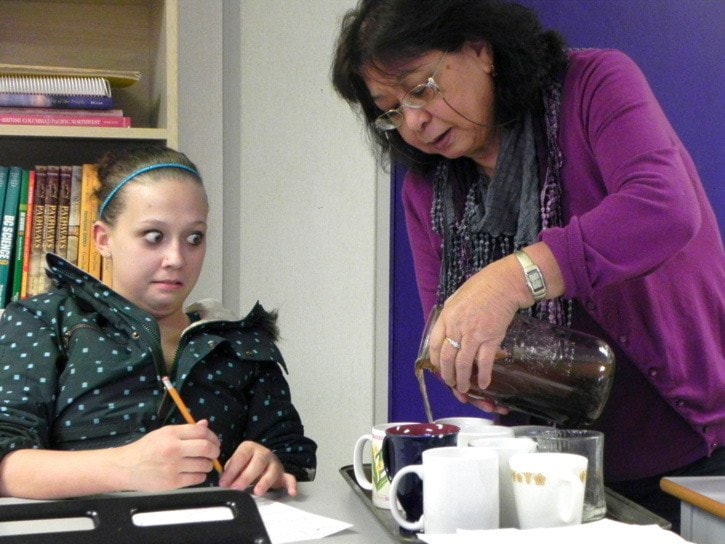For every ailment, there is a healing medicine.
And while most of us run to the pharmacy to relieve our allergy symptoms and aching muscles, a local physician says the answer doesn't have to be pharmaceutical.
Last week, Dr. Jeanne Paul gave students at the Agassiz Centre for Education an introduction to wildcrafting herbal medicine.
The answers to many of our aches and pains are in the flowers and trees that surround us, she says.
Not so long ago, arthritis patients would be flogged with stinging nettle. The sharp hairs painfully lashed medicine into the skin that would work to treat the inflammation. Thankfully, times have changed. Today, the plant is still used to treat arthritis, albeit in a kinder way.
Like many "weeds" and plants indigenous to the Fraser Valley, Dr. Paul says stinging nettle can be harvested so that medicine can be extracted — if you know how to do it.
From calendula, sunflower and goldenrod, to cottonwood, St. John's Wort, and Devil's club, there are cures hidden in nature. As a First Nations elder, Dr. Paul says "the creator" put certain plants in certain regions for a specific reason.
Hawthorn berries, particularly, are something that we all should have in our backyards, she says.
She "wildcrafts" the berries in October, and uses them as a drink to strengthen her heart.
"Everywhere I've lived, I've planted a hawthorne tree," she says.
At 71, she moves around the room with the vitality of a teenager. Her skin is soft and smooth, her voice strong yet comforting.
And as she talks to the students, she occasionally picks up a jar and swirls its contents.
It's an intriguing mixture — a dark orange-red cider, with elderberries and various herbal bits. It's more solid than liquid, and she made it herself, last October. It's ready for drinking now, and the doctor has already asked for enough cups to go around.
Each time she picks it up, the students watch curiously as the thick potpourri moves around the bottle.
When one says she doesn't plan on drinking it, the doctor chides her.
"You have to try something before you can say you don't like it," she tells the girl.
As the talk carries on, the students start to open up, telling the doctor about their health issues.
Many of them have respiratory troubles. And that means, when Dr. Paul returns after spring break, they'll go off in search of cottonwood trees. They'll wildcraft the needed supplies, bring them back to ACE, and learn how to make a natural remedy.
It's only a small portion of what Dr. Paul teaches regularly. She travels to bands around Chilliwack and Agassiz, teaching an in-depth course on herbal medicines. Students learn the latin names for the medicines, how and when to pick plants, as well as the 13 body systems. But they also learn that there is no "one way" to cure anything.
In treating disease, you have be open-minded, she says. As a well-educated physician, she knows herbal medicine is not the end-all, be all.
"Don't get stuck on one idea," she says. "Keep moving."
During the talk at ACE, when she says a term that may be foreign to her audience — iatrogenic, calendula officinalis or the Doctine Law of Signature — she has the group repeat them.
She asks questions, and asks for questions. She praises them, and finally, she rewards them by passing out the drink.
Delicious, they say.
Medicine that doesn't need a spoonful of sugar. Just a little know-how.
To learn more about Dr. Jeanne Paul's classes, visit www.redshawl.com.
